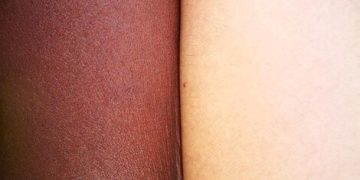Laser Resurfacing in 2025: Is It Right for You?

Laser resurfacing offers a powerful solution for rejuvenating skin by reducing wrinkles, scars, and blemishes, but understanding the procedure, its potential outcomes, and proper aftercare is crucial before considering it, especially with ongoing advancements expected by 2025.
Considering the truth about laser resurfacing: what you need to know before your first treatment in 2025? This comprehensive guide will walk you through everything you need to know about this transformative procedure, ensuring you’re well-informed before making a decision.
Understanding laser resurfacing
Laser resurfacing is a cosmetic procedure that utilizes laser technology to improve skin texture and appearance. It’s designed to address a variety of skin concerns, making it a popular choice for individuals seeking facial rejuvenation.
This treatment works by removing the outer layers of damaged skin, stimulating collagen production, and promoting the growth of new, healthier skin cells. The result is smoother, firmer skin with reduced wrinkles, scars, and blemishes.
Types of Laser Resurfacing
There are two main types of laser resurfacing: ablative and non-ablative. Ablative lasers remove the outer layers of skin, while non-ablative lasers heat the underlying tissue without damaging the surface. Each type has its own set of benefits and considerations.
- Ablative Lasers: These lasers provide more dramatic results but typically require a longer recovery period and may carry a higher risk of complications. Examples include CO2 and Erbium lasers.
- Non-Ablative Lasers: These lasers offer a gentler approach with less downtime, but the results may be more subtle and require multiple treatments. Examples include pulsed dye and Nd:YAG lasers.
- Fractional Lasers: These lasers treat only a fraction of the skin’s surface, resulting in faster healing and reduced risk compared to traditional ablative lasers.

Choosing the right type of laser resurfacing depends on your specific skin concerns, desired outcomes, and tolerance for downtime. Consulting with a qualified skincare professional is essential to determine the best option for your needs.
Benefits of laser resurfacing
Laser resurfacing offers a wide range of benefits for individuals looking to improve their skin’s appearance. From reducing wrinkles to improving skin tone, this procedure can address multiple concerns in a single treatment.
One of the primary benefits of laser resurfacing is its ability to stimulate collagen production, which helps to improve skin elasticity and firmness. This can result in a more youthful and rejuvenated appearance.
Addressing Skin Concerns
Laser resurfacing can effectively treat a variety of skin concerns, including wrinkles, fine lines, scars, and blemishes. It can also improve skin tone and texture, resulting in a smoother, more even complexion.
Furthermore, laser resurfacing can help to reduce the appearance of sun damage, age spots, and other forms of hyperpigmentation. This can lead to a brighter and more radiant complexion.
- Wrinkle Reduction: Laser resurfacing can significantly reduce the appearance of wrinkles and fine lines, especially around the eyes and mouth.
- Scar Improvement: This procedure can help to fade or minimize the appearance of scars from acne, surgery, or injury.
- Even Skin Tone: Laser resurfacing can improve skin tone and texture, reducing the appearance of age spots, sun damage, and other forms of hyperpigmentation.
Overall, laser resurfacing offers a comprehensive solution for individuals looking to improve their skin’s appearance and achieve a more youthful, radiant complexion. With its ability to address multiple skin concerns in a single treatment, it’s no surprise that this procedure is becoming increasingly popular.
Is laser resurfacing right for you?
Deciding whether laser resurfacing is the right choice for you involves careful consideration of your skin type, concerns, and expectations. It’s important to assess your candidacy and understand the potential risks and benefits associated with the procedure.
Certain skin types may be more prone to complications following laser resurfacing, such as hyperpigmentation or scarring. Individuals with darker skin tones should proceed with caution and consult with a dermatologist experienced in treating diverse skin types.
Factors to Consider
Before undergoing laser resurfacing, it’s important to consider factors such as your skin’s overall health, any underlying medical conditions, and your willingness to commit to the necessary pre- and post-treatment care.
Additionally, it’s crucial to have realistic expectations about the outcomes of laser resurfacing. While this procedure can provide significant improvement in skin texture and appearance, it may not completely eliminate all imperfections.
- Skin Type: Individuals with lighter skin tones generally experience better results with laser resurfacing compared to those with darker skin tones.
- Skin Concerns: Laser resurfacing is most effective for treating wrinkles, scars, and blemishes, but may not be suitable for all skin concerns.
- Expectations: It’s important to have realistic expectations about the outcomes of laser resurfacing and understand that results may vary from person to person.
Ultimately, the decision to undergo laser resurfacing should be made in consultation with a qualified skincare professional who can assess your individual needs and provide personalized recommendations.
Preparing for your laser resurfacing treatment
Proper preparation is essential for ensuring the success of your laser resurfacing treatment and minimizing the risk of complications. Following pre-treatment guidelines can help to optimize your skin’s condition and promote faster healing.
Depending on the type of laser resurfacing you’re undergoing, your provider may recommend avoiding certain medications, skincare products, or activities in the weeks leading up to your treatment. This may include avoiding blood-thinning medications, retinoids, and excessive sun exposure.
Pre-Treatment Guidelines
Prior to your laser resurfacing treatment, it’s important to protect your skin from sun damage and maintain a consistent skincare routine. This may involve wearing sunscreen daily, using gentle cleansers and moisturizers, and avoiding harsh exfoliants.
In some cases, your provider may prescribe antiviral medications or topical creams to prevent infections or other complications following your treatment. Be sure to follow their instructions carefully and adhere to any prescribed medication schedule.

By following these pre-treatment guidelines, you can help to prepare your skin for laser resurfacing and increase the likelihood of achieving optimal results.
What to expect during the procedure
Understanding what to expect during your laser resurfacing procedure can help alleviate anxiety and ensure a smooth and comfortable experience. The procedure itself typically involves several steps, from initial preparation to the actual laser treatment.
Before the procedure begins, your provider will cleanse your skin and apply a topical anesthetic cream to minimize discomfort. Depending on the type of laser resurfacing you’re undergoing, you may also receive oral or intravenous sedation.
The Treatment Process
Once you’re adequately numbed or sedated, your provider will begin the laser treatment. They will carefully pass the laser device over the targeted areas of your skin, delivering precise bursts of energy to remove damaged tissue and stimulate collagen production.
During the procedure, you may experience a sensation of heat or tingling. However, the anesthetic cream or sedation should help to minimize any discomfort. The duration of the procedure can vary depending on the size and location of the treated area.
- Anesthesia: Topical anesthesia is used to numb the skin and minimize discomfort during the procedure.
- Laser Application: The laser energy is delivered to the targeted areas of skin to remove damaged tissue and stimulate collagen production.
- Duration: The duration of the procedure can vary depending on the size and location of the treated area.
Following the laser treatment, your provider will apply a protective ointment or dressing to your skin to promote healing and prevent infection. They will also provide you with detailed instructions on post-treatment care.
Aftercare and recovery
Proper aftercare is crucial for ensuring optimal healing and results following your laser resurfacing treatment. Following post-treatment guidelines can help to minimize complications and promote faster recovery.
In the days and weeks following your procedure, it’s important to keep your skin clean, moisturized, and protected from sun exposure. Your provider may recommend using gentle cleansers, topical ointments, and broad-spectrum sunscreens with high SPF.
Post-Treatment Care
During the initial recovery period, you may experience redness, swelling, and peeling of the skin. These are normal side effects that should subside within a few days to a week. Avoid picking or scratching at the treated area, as this can increase the risk of infection or scarring.
Additionally, it’s important to avoid strenuous activities, excessive heat, and harsh skincare products during the recovery period. This can help to prevent irritation and promote faster healing. Follow your provider’s instructions carefully and attend any scheduled follow-up appointments.
- Keep Skin Clean: Gently cleanse the treated area with a mild cleanser to prevent infection.
- Moisturize Regularly: Apply a thick layer of moisturizer to keep the skin hydrated and promote healing.
- Protect from Sun: Avoid sun exposure and wear sunscreen with high SPF to protect the skin from damage.
By following these aftercare guidelines, you can help to ensure a smooth and successful recovery following your laser resurfacing treatment, setting the stage for long-lasting results.
| Key Point | Brief Description |
|---|---|
| ✨ Skin Rejuvenation | Enhances skin texture and firmness. |
| 🛡️ Sun Protection | Crucial for post-treatment healing. |
| ⏳ Recovery Time | Varies based on laser type; plan accordingly. |
| 👩⚕️Professional Consultation | Essential to determine the best laser type. |
Frequently Asked Questions
▼
Laser resurfacing aims to improve skin texture by removing damaged outer layers, reducing wrinkles, scars, and blemishes, leading to a rejuvenated appearance.
▼
Recovery time varies based on the laser type used; ablative lasers require longer recovery periods of weeks, while non-ablative lasers need only a few days.
▼
No, laser resurfacing is not suitable for all skin types. Lighter skin tones generally show better results, while darker skin tones may experience complications.
▼
Pre-treatment steps include avoiding certain medications, protecting skin from sun exposure, and following a gentle skincare routine to prepare the skin for the procedure.
▼
Post-treatment aftercare involves keeping the skin clean and moisturized, avoiding sun exposure, and using recommended topical ointments to prevent infection and promote healing.
Conclusion
In conclusion, laser resurfacing can be a transformative treatment for enhancing skin appearance through significant improvements in texture, tone, and reduction of imperfections. Preparing well, understanding aftercare, and consulting professionals remains key to successful outcomes in 2025.





